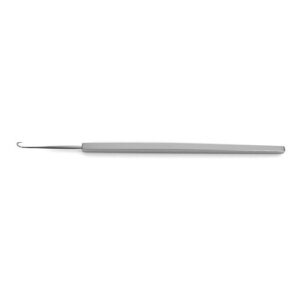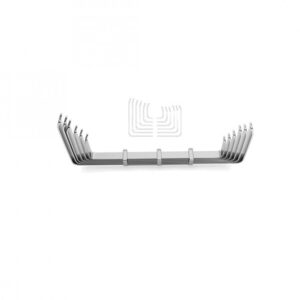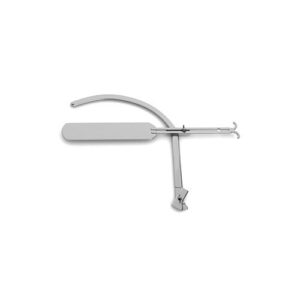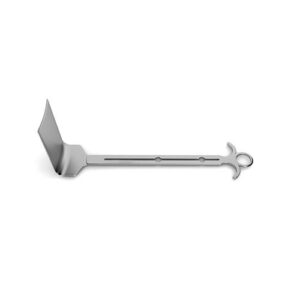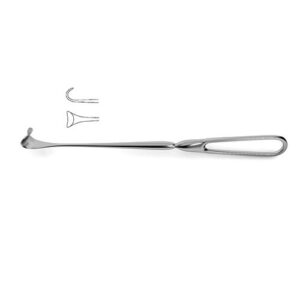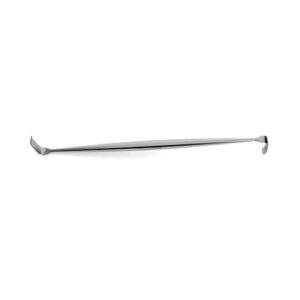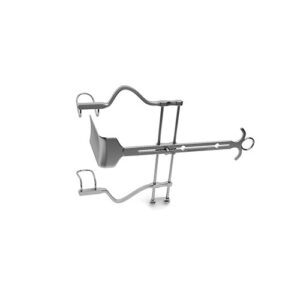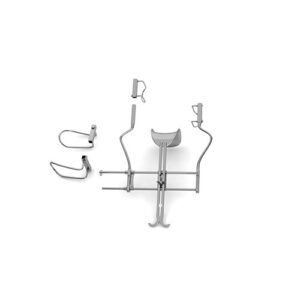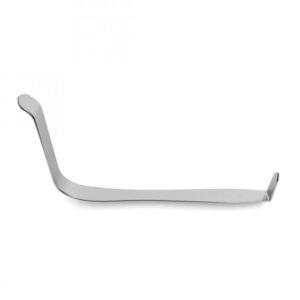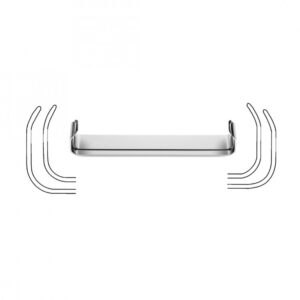| Name | Parker Retractor |
| Lead Time | 0-3 days |
| Specialty | General Instruments-Hooks & Retractors – Retractors |
| Material Finish | Stainless Steel |
| Grade | Premium Operating Room |
| Units of Measurement | Set |
| Manufacturer | seemab surgical |
| Sterility | Non-Sterile |
| Usage | Reusable |
Parker Retractor
Parker Retractor
double-ended, set of 2
Parker Retractor comes in a set of two and contains curved blades on both ends, which may assist in retracting incisions during scenarios such as laparotomy. The smaller length of 5″ can be useful in pediatric procedures or holding back tissues in small incisions of areas such as the abdomen.
SKU:
VI-01-562
Category: Hooks & Retractors
Description
Shipping & Delivery
Related products
Balfour Fourth Blade Attachment
Balfour Fourth Blade Attachment
for detachable balfour retractor systems
Balfour Fourth Blade Attachment is especially designed to be used as an addition to the Detachable Balfour Retractor Systems. The long, flat blade can accommodate to different spread sizes to fit the needs of the procedure being conducted. It also contains an option for the right arm or left arm depending on the area of the abdominal wall that needs to be retracted.
Balfour Extra-Deep Center Blades
For balfour retractor systems w/ fixed side blades, 2-3/4" wide x 4" deep
Balfour Extra-Deep Center Blades consists of a 4" deep blade that is curved at a right-angle. This blade may be intended for larger patients or for accessing deeper areas of the abdominal cavity so that they can be held in place. Another feature of this center blade is that it contains loop holes in the center slot so that it can provide different spreads.
Cushing Vein Retractor – Fenestrated Handle
Cushing Vein Retractor - Fenestrated Handle
fenestrated handle
Cushing Vein Retractor is a more light-weight instrument due to its fenestrated handle. The lengths can range from 9" to 16." This vein retractor can be used during general surgeries to retract veins or other small tissues. It may also be used in other medical procedures such as neurosurgery to pull back tissue.
Davis Retractor
Double-ended, 5.0 mm x 16.0 mm & 8.0 mm x 21.0 mm blades, 5-1/2" (14.0 cm)
Davis Retractor is a stainless steel instrument that is double-ended and has opposing blades on either end. This retractor is able to divide and keep edges of an incision open. This instrument is also protected by the seemab surgical manufacturer warranty on defects in materials and workmanship.
Balfour Abdominal Retractor W/ Fixed Side Blades – 4″ Deep
w/ fixed fenestrated side blades, 4" deep & center blade #2470-73 (3-3/8" x 2-1/2")
Balfour Abdominal Retractor with Fixed Side Blades contains fenestrated side blades that are fixed onto the instrument. This retractor is primarily used during surgeries in which large abdominal incisions need to be held open to provide more visibility to the surgeon. Moreover, the instrument is offered in different sized spreads to accommodate different patients.
Abdominal Detachable Retractor
Abdominal Detachable Retractor
set includes: 1 pair of 2-1/2" (6.4 cm) wire lateral snap-on blades, 1 pair of 3-1/2" (8.8 cm) wire lateral snap-on blades & one (1) center blade
Balfour Abdominal Detachable Retractor is a system that includes one pair of 2 ?" wire lateral snap-on blades, one pair of 3 ?" wire lateral snap-on blades, and one center blade. The center blade is offered in a varity of sizes to accommodate patients. Its ideal function is to be used during a laparotomy in which abdominal incisions need to remain open to uncover the area. Additionally, this retractor is self-retaining, which allows it to be held in place to allow the surgeon to focus on the task and avoid holding it.
Deaver Retractor – Double-Ended
Double-Ended
double-ended, 1" wide x 9" long
Deaver Retractor is typically used during abdominal procedures to keep the organs from interfering with the surgical site. This double-ended instrument has a long, curved blade on one end and a short, right angle blade on the other end. The shorter end may help to retract the walls of the bladder during intravesical surgeries, and the longer end may be helpful for deeper retractions.
Collin Retractor
Collin Retractor
double-ended, set of 2, 6-1/2" (16.5 cm)
Collin Retractor is designed to push back tissue that may conceal part of the area that is being operated on. With the help of the rounded double-ended blades on each end, damage to tissues is reduced while they are held firmly in the desired position. Depending on the size of the incision, this retractor comes in a set of two.


